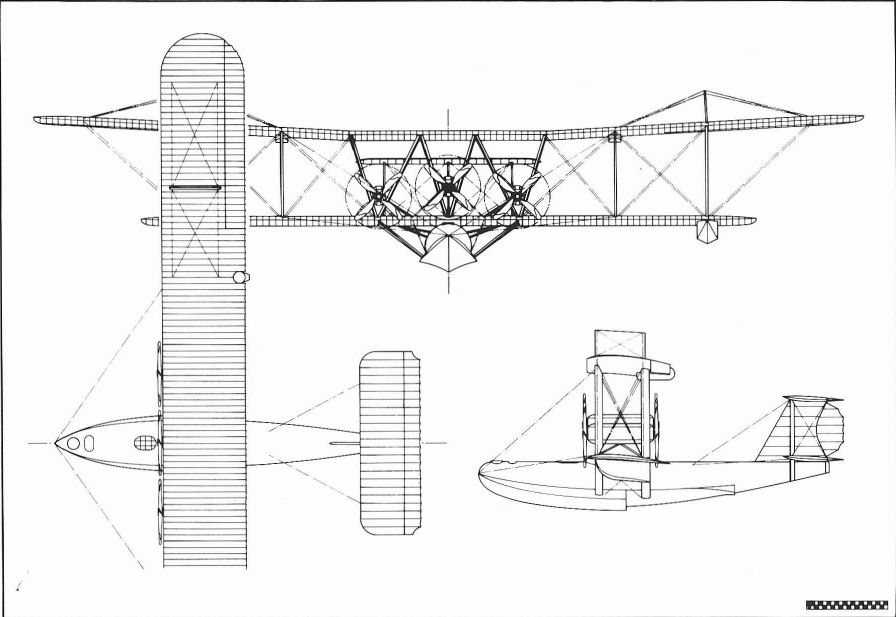
Описание
Страна: Великобритания
Год: 1918
S.Ransom, R.Fairclough English Electric Aircraft and their Predecessors (Putnam)
P.6
Pulex. Anti-submarine patrol flying-boat powered by six 600 hp Rolls-Royce Condor engines mounted in tandem pairs and driving tractor and pusher propellers. Six crew. Bi-, tri-, quadru- and quintoplane arrangements were considered but the first was adopted for the final design, together with a biplane tail unit having a large central fin and twin outboard rudders. The hull was to be of Linton Hope construction. Armament envisaged: twin Lewis guns at bow and upper wing nacelles and six 500 lb bombs carried below the lower wing-root. In 1919 the Pulex was offered for civil use, in which role it was intended that it carry 40 passengers or 11,200 lb of freight. Span 201 ft 6 in; length 88 ft 9 in; height 44 ft 6 in; wing area 7,077 sq ft. Weight loaded 65,000 lb. Cruising speed 100 mph at sea level; climb to 6,000 ft, 26 min; range 800 miles; endurance 8 hr at cruising speed. January 1918.
P.7
Eclectic. Long-range civil flying-boat possibly designed to a specification issued by the Royal Mail Steam Packet Co. The Eclectic was intended to carry 50 passengers each with a luggage allowance of 50 lb, or 14,650 lb of freight. Passengers were allowed ample room to move about in luxuriously fitted cabins, which included dining and smoking rooms, the latter being of fireproof construction and built on top of the hull. Sleeping births were also provided for use on long journeys. The flying-boat was powered by eight 600 hp Rolls-Royce Condor engines geared together in two groups of four, each group driving one tractor propeller of 25 ft diameter. Some experimental work was conducted and included the design of steel spars and an investigation into the use of steam turbine-driven propellers. Span 248 ft 6 in; length 103 ft 6 in; height 51 ft 6 in; wing area 10,000 sq ft. Weight loaded 100,000 lb. Cruising speed 80 mph; range 1,600 miles; endurance 20 hr at cruising speed. December 1918.
- S.Ransom, R.Fairclough English Electric Aircraft and their Predecessors (Putnam)
Фотографии
-
S.Ransom, R.Fairclough - English Electric Aircraft and their Predecessors /Putnam/
Phoenix P.7 / English Electric Eclectic.


